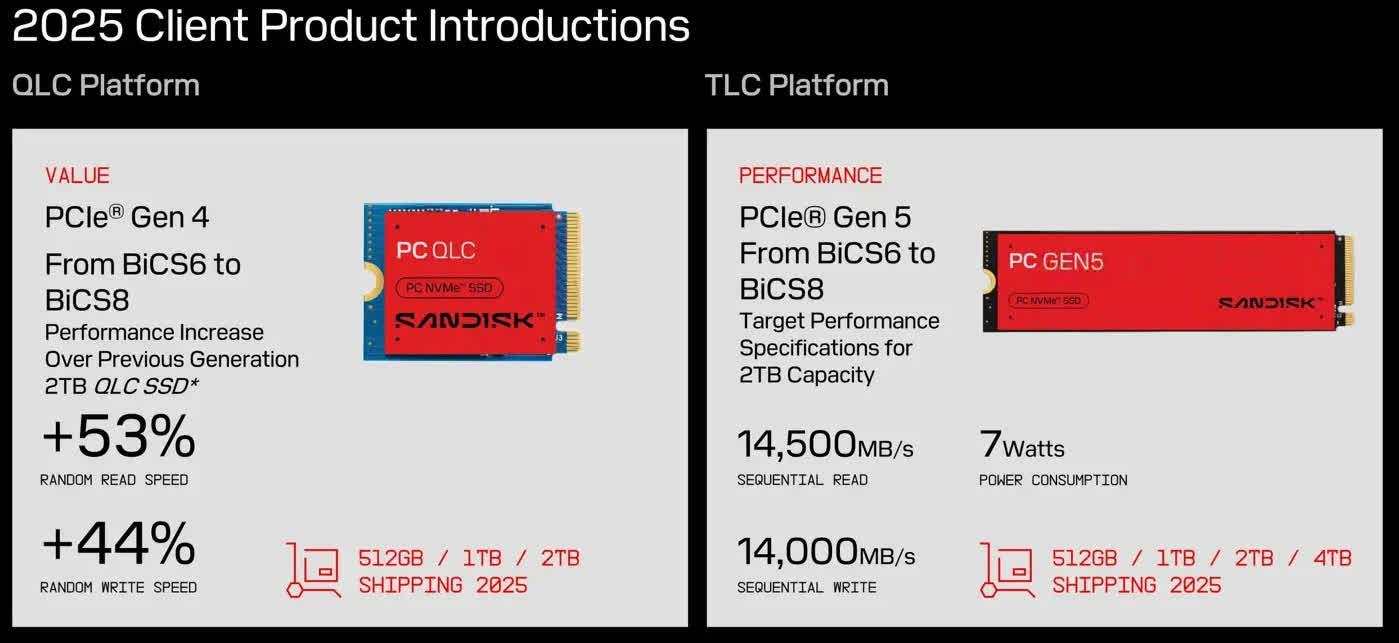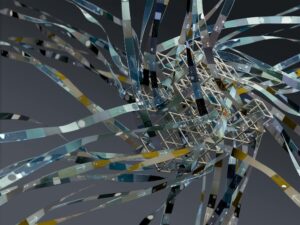Forward-looking: Generally, the faster a drive performs, the higher its power consumption tends to be. However, SanDisk seems to have solved this problem with a new PCIe 5.0 SSD. This drive maximizes the current interface’s speed capabilities while keeping power usage comparable to modern Gen4 drives.
Last week, during an investor event, SanDisk, Western Digital’s flash storage division, introduced two new SSD platforms focused on balancing performance with value.
At the top of the premium tier is a flagship drive that aims to stretch the limits of the PCIe 5.0 interface. According to Tom’s Hardware, this SSD is expected to deliver incredibly high sequential read and write speeds of 14,500 MB/s and 14,000 MB/s, respectively, for its 2TB version. Impressively, it reaches these speeds while using only 7 watts of power.
For context, most of today’s Gen4 drives typically consume about 7W, whereas the fastest Gen5 models on the market can use around 10W during peak operations. It’s speculated that this new drive may be driven by Silicon Motion’s efficient SM2508 controller.
The currently unnamed drive will be part of SanDisk’s high-performance TLC NAND platform, alongside the WD Black gaming SSD family. It will be available in capacities ranging from 512GB to a substantial 4TB when released in Q2 2025.
Additionally, SanDisk is launching a value-centric QLC-based SSD platform that maintains PCIe 4.0 connectivity and offers storage capacities up to 2TB. One model based on this platform is the Western Digital PC SN5100S, which offers a 53 percent enhancement in random read speeds and a 44 percent boost in random write performance compared to its predecessor, the SN5000S.
Regarding QLC NAND, SanDisk has ambitious plans to increase the adoption of this higher-density (though shorter-lived) flash technology. The company intends for QLC technology to power 75 percent of its storage solutions by 2028 to enhance capacity. Concurrently, it plans to transition fully from PCIe Gen4 to the Gen5 standard within this period.
Both new SSD product lines will utilize Western Digital’s latest 3D BiCS8 NAND flash, further pushing performance limits.
In summary, while SanDisk may be refreshing its approach, its dedication to advancing flash storage technology remains steadfast.




